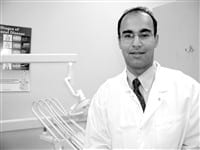Doctors, Patients Should Work Together to Improve Medical Literacy
A critical but often overlooked aspect of health care is a topic called medical or health literacy, defined as a patient’s ability to read and understand health information and make informed decisions about his or her health.
In its landmark 2004 report, “Health Literacy: A Prescription to End Confusion,” the Institute of Medicine (IOM), an arm of the National Academy of Sciences and the nation’s advisor on health matters, wrote that “clear communication is critical to successful health care,” and “health literacy remains a neglected final pathway to high-quality health care.” The IOM estimated at the time that some 90 million Americans, nearly half of the adult population in the U.S., have low levels of medical or health literacy. Eight years after the report, the problem persists.
Several factors contribute to our medical illiteracy. Educational levels, language barriers, cultural differences, and age — especially for people older than 65 — are some of the barriers affecting communication between patient and provider. Even fear can play a role, when patients don’t want to admit they don’t understand something the doctor or nurse has said because they might be thought ignorant.
The language of medicine also confuses patients. Physicians and other health care professionals, with their own jargon, are not the best at communicating simple information, and terms such as hemorrhage, edema, myocardial infarction, and carcinoma can be foreign words to many patients.
Continuing medical discoveries, technological advances, and the burgeoning size and complexity of our health care system have combined to add more mystery and confusion to health care. The irony is that this is happening in an age when health information — whether about the human body, diseases, diet, fitness, or insurance — is more readily available than ever from a multitude of sources.
The consequences of medical illiteracy are severe. It leads to higher rates of disease and death, more use of emergency rooms, and billions of dollars in avoidable costs for our health care system. Patients with low medical literacy have poorer health outcomes, are more prone to medication errors, and are more likely to be hospitalized or rehospitalized. Tragic results can also occur over misunderstandings of medical procedures or the improper use of medications.
Millions of Americans have difficulty with common tasks such as following directions on a prescription bottle, and even the well-educated among us can be challenged by serious illnesses or the constant care of chronic conditions such as diabetes or heart disease.
As part of its prescription for health literacy, the IOM has called for “great efforts from the public health and health care systems, the education system, and society overall.” That global perspective is appropriate, but improvement can first and more quickly begin at a basic level: within the physician-patient relationship. Fixing the problem is about what the patient and provider both need to do.
Physicians must become bilingual, not in the sense of speaking another language, but being able to use words that patients can understand. Communicating with words like bleed instead of hemorrhage, swelling for edema, heart attack for myocardial infarction, and cancer for carcinoma would go a long way to improving patient understanding. The entire medical team — nurses, medical assistants, and others — can also play key roles in communicating more plainly and helping patients gain greater understanding.
Patients must do their part as well. I ask my patients to come to their appointments “ready to teach and to learn.” Patients must teach the physician about themselves and understand the basics about their bodies and their medical conditions. They should be ready and willing to ask questions, despite how basic they may seem. A patient should never leave a physician’s office confused about a doctor’s instructions or with a question unanswered.
For each physician and patient, the goal of increasing medical literacy is the same: to make care better and safer and improve the patient’s health. Each must contribute to reach that goal. –
Dr. Andrew Morris-Singer is a primary-care physician at Brigham and Women’s Hospital in Boston and co-founder and president of Primary Care Progress. This article is a service of the Mass. Medical Society.

